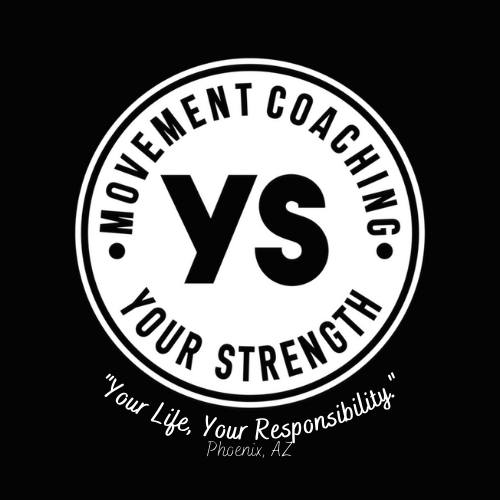Understanding Posture and Its Impact on Your Body
In the hustle and bustle of modern life, it's easy to overlook the subtle yet profound influence that posture has on our bodies. We may not always be conscious of it, but the way we hold ourselves affects more than just aesthetics – it plays a pivotal role in our overall well-being. This blog aims to unravel the intricacies of posture, shedding light on its importance and the profound impact it has on our bodies.
What is Posture and How Does it Impact My Body?
Definition of Posture:
Posture refers to the alignment and positioning of your body parts, whether you're sitting, standing, or moving. Maintaining good posture is not just about appearances; it's about supporting your body's structure and function.
Significance of Good Posture:
Beyond preventing slouching, good posture contributes to overall well-being. It helps prevent pain and discomfort, supports efficient movement, and even influences our mood and confidence.
Defining Posture: Static vs. Dynamic
Static Posture:
Static posture involves the way you hold your body while stationary, like when sitting or standing. Understanding and maintaining proper static posture is fundamental for overall body health.
Dynamic Posture:
Dynamic posture, on the other hand, is about how your body moves – the alignment during activities like walking, running, or lifting. Achieving dynamic posture requires a harmonious coordination of muscles and joints.
Muscles Contributing to Good Posture
Key Muscles:
To maintain good posture, certain muscles play a crucial role, including the erector spinae, core muscles, and the pelvic floor. These muscles work together to support your body's alignment and stability.
Importance of Muscle Balance:
A delicate balance among these muscles is essential for optimal posture. Imbalances can lead to issues such as back pain or poor spinal alignment.
Healthy Connective Tissues and Posture
Connective Tissues' Role:
Connective tissues, comprising ligaments, tendons, and fascia, are the unsung heroes of good posture. They provide support, structure, and flexibility to your body.
Maintaining Health:
Learn how to keep your connective tissues healthy through proper hydration, nutrition, and targeted exercises, ensuring they contribute positively to your posture.
Elasticity
Flexibility and Range of Motion: Elasticity in connective tissue allows it to stretch and deform to accommodate movement. during activities such as bending, stretching, and joint rotation.
Shock Absorption: Elasticity helps connective tissues absorb shocks and impacts provides a degree of cushioning, protecting bones from excessive wear and tear during movement.
Muscle Contraction: Elasticity in connective tissues, especially tendons, allows them to store and release energy during muscle contraction. enhances the efficiency of movement
Dynamic Movement: where the tissues need to repeatedly stretch and return to their original shape.
Stiffness:
Joint Stability: Stiffness in certain connective tissues, preventing excessive movement that could lead to dislocations or instability.
Postural Support: Stiffer connective tissues contribute to the maintenance of proper posture. They provide a structural framework that helps keep the body upright and aligned.
Balancing Elasticity and Stiffness:
Adaptability: Connective tissues must adapt to various stresses and strains placed on the body. The balance of elasticity and stiffness allows them to adapt to different levels of force and movement, promoting resilience and preventing damage.
Dynamic Stability: The ability of connective tissues to dynamically shift between elasticity and stiffness ensures that the body maintains stability during both static and dynamic activities.
Functional Integrity: Optimal functioning of the musculoskeletal system relies on the interplay between elastic and stiff connective tissues. This balance is essential for efficient movement, joint integrity, and overall physical performance.
Diaphragms: 360-Degree Support for Posture
Diaphragmatic Function:
Proper activation and tone of the pelvic diaphragm contribute to a stable foundation for the spine. This stability is essential for maintaining an upright posture and preventing issues such as lower back pain.
The thoracic diaphragm is intricately connected to the spine. When it contracts during inhalation, it helps to lengthen the spine, promoting an elongated and upright posture.
Intraabdominal Pressure and Spinal Stability
Intra-abdominal Pressure:
As the thoracic diaphragm contracts, it causes the ribcage to expand, allowing for increased lung capacity. This expansion influences the alignment of the upper body and promotes an open and lifted chest. Diaphragmatic breathing encourages the coordinated activation of the pelvic and thoracic diaphragms. This engagement supports the core, creating a stable foundation for the spine and promoting proper alignment. By fostering a connection between breath and movement, individuals can enhance their awareness of body alignment and make intentional adjustments to maintain good posture.
As you embark on this journey towards better posture, remember that small changes can yield significant results. Consistency is key, and every effort you make contributes to a healthier, more aligned you.
Posture is not just about standing tall; it's a dynamic interplay of muscles, connective tissues, and breathing.
Stay tuned for our next blog, where we'll delve into practical steps to enhance and address posture issues. Take an active role in your journey toward better posture. Next Steps: Improving Your Posture In the upcoming blog, we'll provide actionable steps to improve your posture. From simple exercises to ergonomic adjustments, empower yourself to make positive changes.








